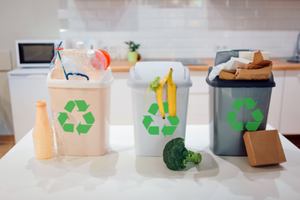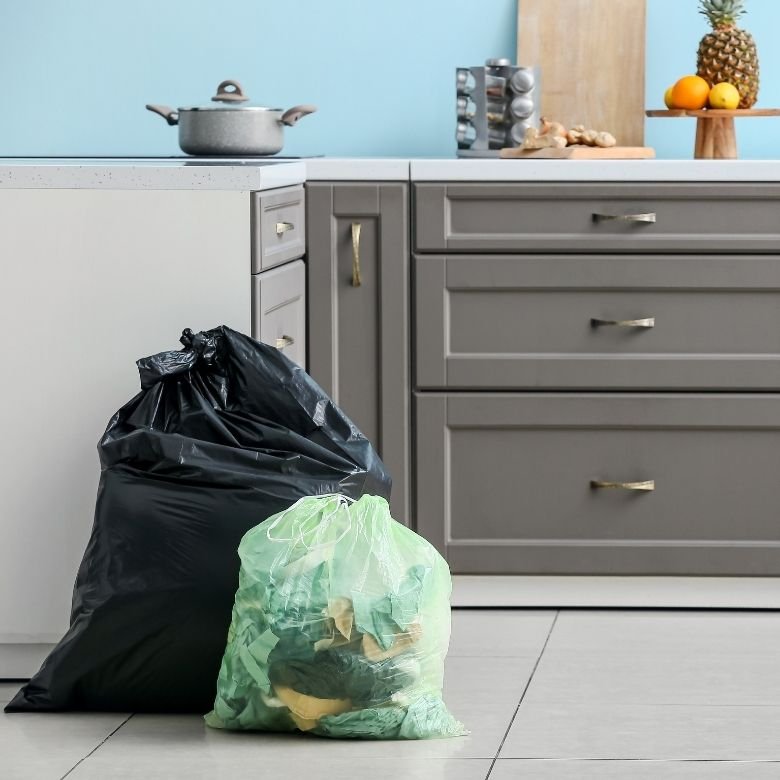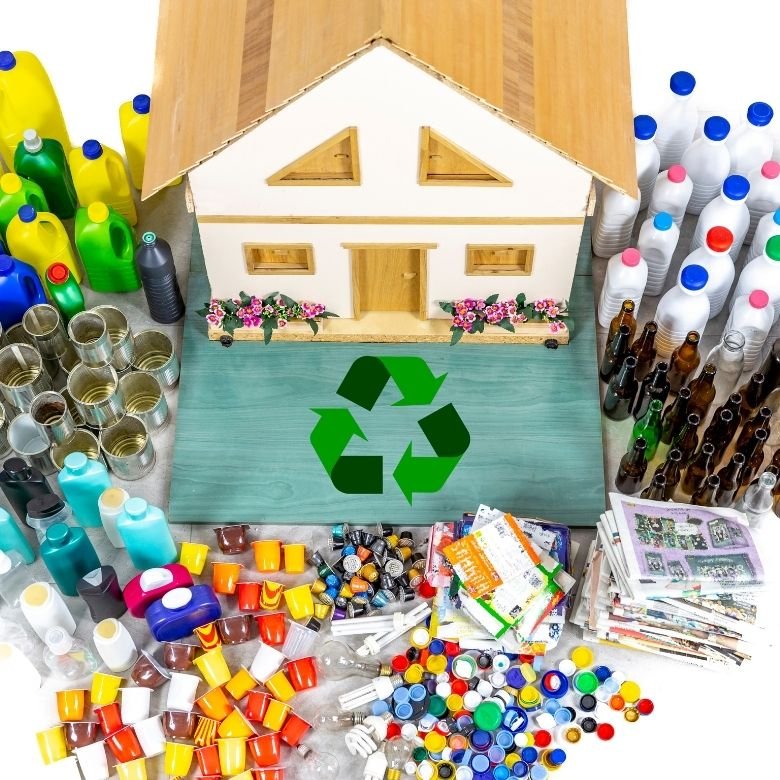The level of municipal waste production in Poland is only 329 kg per person per year. This is half as much as in Denmark! Unfortunately, we still do not know how to sort waste. According to EU data for 2017, the recycling and composting rate in our country was only 34%. Meanwhile, according to EU recommendations, municipalities should recycle up to 65% of waste by 2030!

Basic principles of waste sorting in Poland
The applicable legal regulation governing methods of selective waste collection is the Ordinance of the Minister of Environment of 29 December 2016. It defines five basic categories according to which waste should be sorted at home. These include:
- paper, which also includes cardboard and paper packaging, collected in blue containers;
- glass, collected in green containers – with the additional option of sorting clear glass in white containers;
- metals and plastics, including multi-material packaging, collected in yellow containers;
- biodegradable waste collected in brown containers.
Finally, mixed waste is disposed of in black containers. Only waste that doesn’t belong to any of the above categories should end up in these black containers – in reality, through ignorance, carelessness and inattention, they are also filled with recyclable materials.
How can I correctly identify the type of waste?
Despite good intentions, it is not always possible to effectively sort waste at home. The difficulties are mainly due to the complex composition of waste. Not everyone is able to decide whether the packaging is paper or plastic.
The appropriate labelling of products should make it easier for consumers. International symbols indicate not only whether a given waste is recyclable, but also the material from which it is composed. For example, ‘PAP’ stands for paper, ‘PP’ for polypropylene, ‘PET’ for polyethylene, etc. Reading labels carefully will certainly help you to sort your waste correctly.
A second life for organic waste
Every household produces kilograms of waste that decompose easily and thus pose no threat to the environment. This includes fruit and vegetable waste, twigs and flowers, grass cuttings, sawdust and eggshells. According to the rules in force, you should sort them conscientiously and put them in the brown containers.
However, if you are the lucky owner of a backyard garden, you can use bio-waste in a different way. Collected in a simple composter, it will turn into organic fertiliser after about a year, ideal for your flowerbeds and vegetable crops.

The most common mistakes made when sorting waste
Observations made at waste sorting plants and incineration plants show that we still don’t know how to sort our waste properly. Meanwhile, the better the segregation at source, the higher the level of recycling.
What mistakes do we most often make? What are the most important rules to remember when sorting waste at home?
- Paper and plastic packaging should be thoroughly crumpled before being thrown away to reduce the volume of waste.
- Do not put paint and varnish cans, motor oil bottles, electrical equipment or batteries in the yellow containers.
- Diapers, paper towels and other hygiene items do not qualify as paper waste. Like soiled and greasy paper, they should be put in the black container.
- Light bulbs, pieces of mirror, window glass, and heat-resistant glass should not be put in the glass containers.
- Packaging does not need to be washed, just emptied of any food residue.
- Bio-waste should not be disposed of in plastic rubbish
- Impregnated wood, edible oils and animal faeces cannot be put in the brown containers.
- Medicines are particularly hazardous to the environment and should therefore be taken to a pharmacy or a Selective Waste Collection Point.
Many municipalities issue their own guides explaining how to correctly sort waste and where to dispose of waste that does not meet the basic sorting criteria. Some brochures contain specific tips on local segregation rules, e.g. on washing packaging. These make it much easier to familiarise all household members with proper sorting methods. Ask for them at your local municipality office or information centre!

How can you sort waste most effectively at home?
Waste sorting starts at home and this is where a bottleneck often occurs. How do you separate plastics, paper, metals and bio-waste effectively in a space that is usually limited? Is it possible to arrange five separate waste containers without sacrificing interior aesthetics?
The most popular solution is ready-made waste container sets mounted in kitchen cabinets. Their size and number should be based on the available space, but also on the proportions of waste generated at home. Unfortunately, although neat and compact, they are not cheap and their distribution may not suit individual family needs.
It is also possible to sort waste at home according to its source or everyday utility. The paper container can then be found in the study or the children’s room, the bio-waste container under the sink, and glass can be collected in the hall wardrobe or the garage. As a rule, mixed waste, plastics and green waste are taken away most often due to the risk of odour.
Why sort your waste?
Sorting waste is still seen as a nuisance. Not everyone believes that it makes sense either, pointing to the thoughtlessness of people confusing containers or the alleged practice of crushing all the waste together. However, these myths and excuses are no justification.
It’s simple maths. The less you sort, the more mixed waste you produce, which ends up in a landfill. During the slow decomposition process, dangerous gases are released and unwanted chemicals seep into the soil and surface water. The consequences can be disastrous not only for plants and animals, but also for human health.
By sorting your waste at home, you are actively protecting your local community and the environment!
